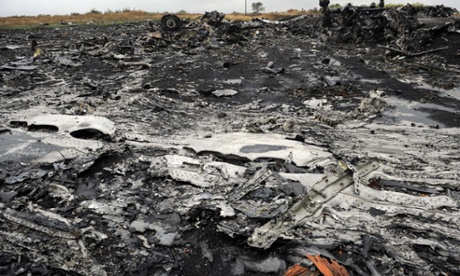
Before the war, Oksana Biryukova’s lab helped investigators connect criminals to crime scenes. Now her equipment is buzzing around the clock trying to identify the charred remains of Ukrainian soldiers.
The DNA laboratory in the southeastern city of Zaporizhia is the only one in the country charged with creating genetic profiles for the unidentified bodies of Ukrainian servicemen killed in the conflict with pro-Russian separatists.
“These samples arrive every day,” Biryukova, the chief analyst at the interior ministry lab told AFP, nodding at brown boxes stacked in the corner of her gleaming white workplace.
“The full picture -- nobody knows it,” she said. “The 400 that we have handled is just some of the work.”
Trying to put a name to the remains of those killed in the seven months of brutal fighting in east Ukraine can be a difficult task.
Body fragments sent to Biryukova’s lab are often so degraded that specialists have to run tests several times, she said, showing vacuum-packed bones and a piece of jaw lying in an unassuming refrigerator.
“Most of the time we can only use bone tissue (to run tests) because samples come from people who have burnt almost completely.”
Even then, family clinging to hope that their loved ones are still alive sometimes refuse to give their DNA for testing.
Getting the bodies of those killed from the battlefield to the laboratory takes a lot of hard work. Commanding officers can no longer do it if the area has passed to hands of separatists.
Volunteer group Narodnaya Pamyat -- which works with the authorities to try to recover and return the remains of those missing -- estimates that more than 500 soldiers remain unaccounted for.
As military casualty figures spiked at the end of the summer, members from the organisation who have experience searching for World War II remains offered to help Ukraine’s overwhelmed military find those left behind.
But their operations are makeshift at best.
“The vehicles we have are junk on wheels, and de facto people do this work on their own money, on their own time,” says Konstantin, an army officer who helps put together search parties to scour rebel territory for the dead.
So far his groups have helped to recover some 160 bodies from the conflict zone.
Once a body is found the first obstacle is often the lack of any identification as Ukraine’s cash-strapped military cannot even furnish dog tags.
“Servicemen don’t have enough tags, and volunteer (fighters) never had them at all,” military expert Ivan Yakubets said.
Along with many other supplies, dog tags are now being made through crowd-funding initiatives.
The entire military operation in the east is so ill-equipped, it is “for the most part a partisan campaign,” Yakubets said.
When the bodies are finally brought in for analysis the morgues in cities closest to conflict zones often struggle with the scale of the job.
In Zaporizhia, about 170 kilometres west of rebel stronghold Donetsk, some of the bodies had to be buried before they could be identified last month after the morgue ran out of room, says Evgeniy Ksenzov, who works at the morgue’s forensic department.
Since then Ksenzov has received four giant refrigerators to keep the remains until they are claimed by their relatives after a genetic match.
At the cemetery in the outskirts of Zaporizhia, 54 anonymous graves lie in a dusty field, marked “unknown soldier” and adorned with wreaths, Ukrainian flags and children’s drawings.
Of the first 200 bodies that arrived in Zaporizhia in September -- many of them from the army’s defeat in the town of Ilovaisk -- these had not been claimed by relatives, Ksenzov said.
In total the United Nations says more than 4,000 people have been killed in the conflict since Apri.
Also still out in the fields are thought to be the remains of some 10 of the victims from downed Malaysia Airlines flight MH17 that was blasted out of the sky on in July over rebel territory, killing all 298 people on board. The others have been recovered.
While the burials of some of the unidentified servicemen have at least afforded them some dignity, the volunteers still searching for more remains fear for the other soldiers left lying in rebel-held areas.
Konstantin, who helps trying to track down remains, says there are areas that the recovery teams cannot enter.
Uppermost in his worries are those soldiers who perished on the territory of the so-called “Lugansk People’s Republic” (LNR), the smaller of the two rebel enclaves in the east.
There the insurgent leaders have refused to let volunteers take out the dead for more than a month, claiming they cannot guarantee security.
“In another month or two, there will only be bones that remain of the LNR bodies,” he said, approximating that there are between 100 and 200 bodies in LNR-controlled territory.
Wednesday 5 November 2014
http://www.bworldonline.com/content.php?section=World&title=bone-by-bone-ukraine-identifies-its-dead&id=97311





